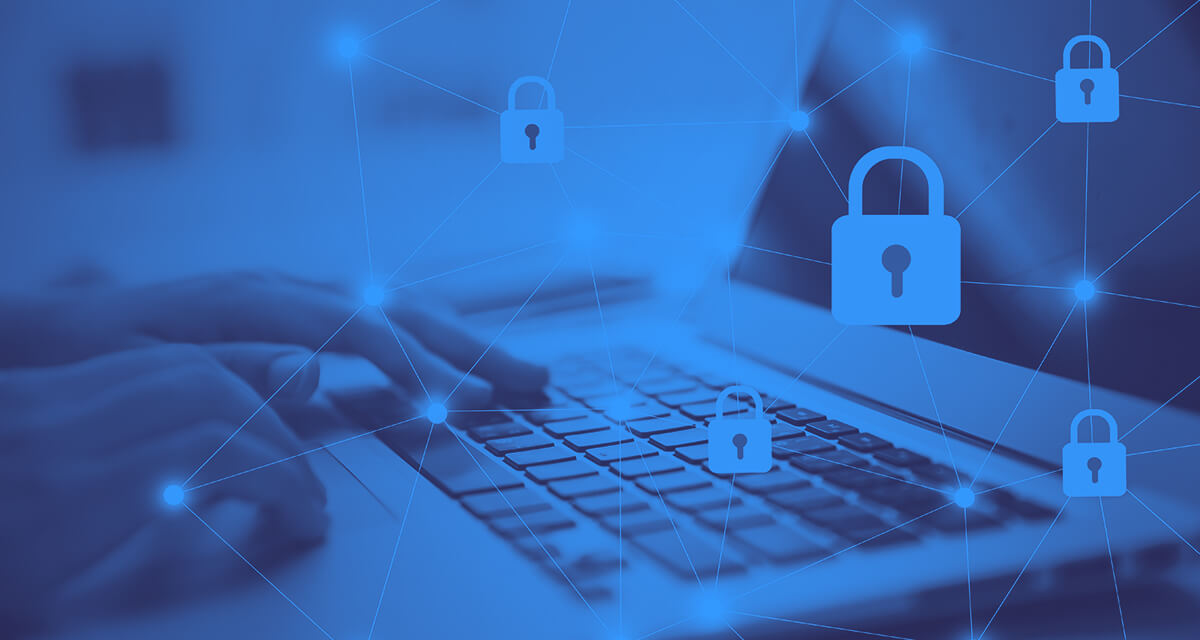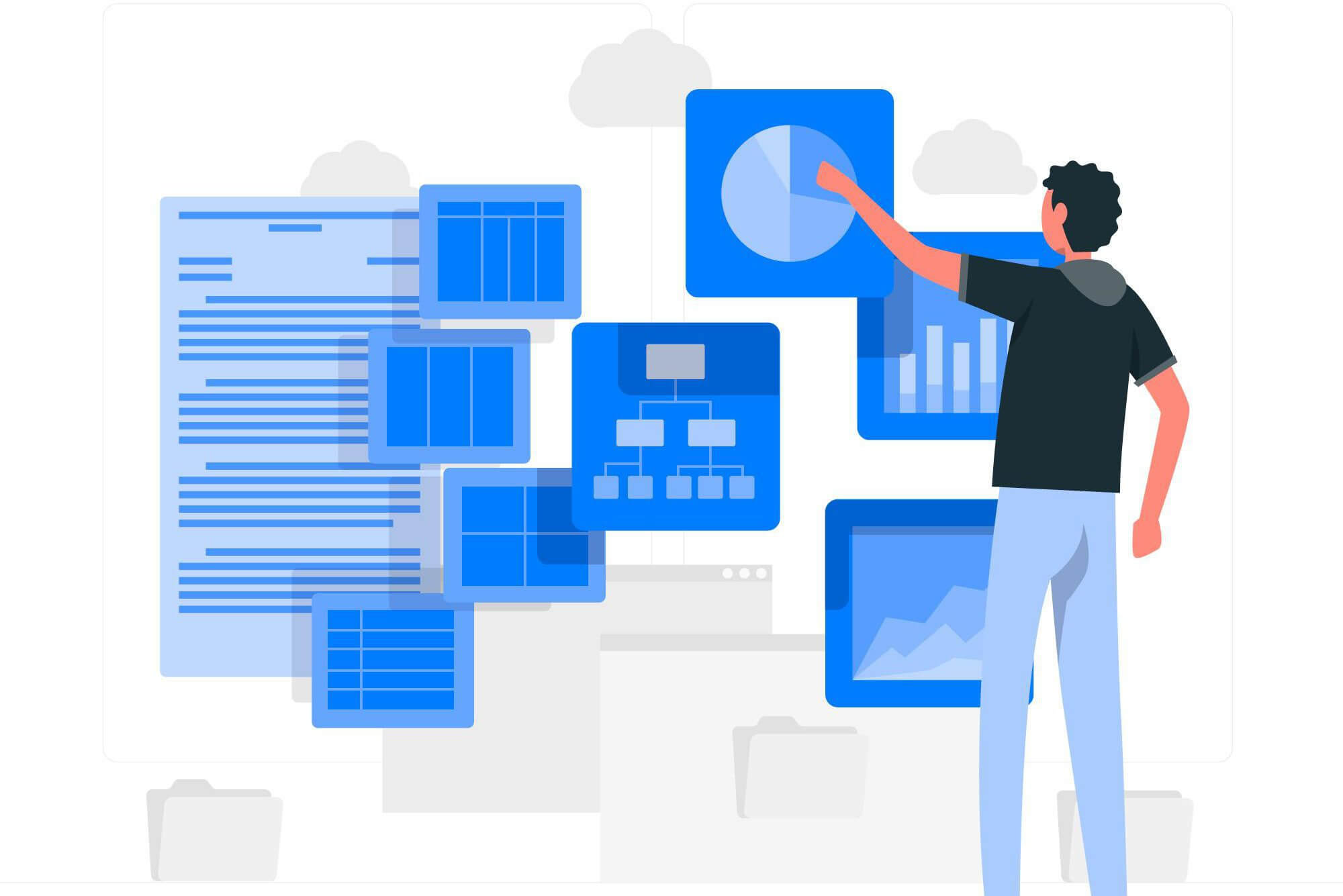Almost all of us have come face-to-face with malicious software at one point or another. Malicious software is collectively known as malware and is created to cause damage. Malware can steal sensitive data and login credentials, damage files, and even take your device hostage.
If you wish to know more about malware, how it functions, what damage it can cause, and how you can protect computer systems and corporate networks, then you are in the right spot.
Today, we shall know all there is to know about malware. So, stick till the end to find out!
What Is Malware?
Malware is software coded to cause damage and harm to the network and devices it enters. It may be used to exploit other software or hardware.
Malware is the short term for malicious software that indicates Trojans, spyware, ransomware, viruses, and all other software codes used for malware attacks or malicious intent.
The malicious intent of malware code causes malware to be deemed as something that causes harm to computer systems, networks, and even servers. The type of attack a malware launches helps security experts differentiate one malware type from another.
What Is Malware? Is It A Type Of Virus?
Malware includes all types of computer viruses but not all malware is a form of a virus. Computer viruses can self-replicate by embedding their code into other programs and files. This causes a virus to spread rapidly from one device to another.
Identifying how malicious code works can help you see whether a certain malicious attempt has been made by a virus or other types of malware. If malware code is not replicating and copying itself to other software to spread, then it is a type of malware, not a virus.
Is Malware Dangerous, And What Damage Can It Cause?
Malware attacks can crack weak passwords, hide deep within operating system files, spread malware throughout entire networks, and even cause trouble/disruption in business operations. Some other kinds of malware can also slow down computer systems, redirect users to malicious websites, spam a system with ads or lock up confidential/sensitive data.
Malware or malicious software is the major cause of all cyber attacks. This includes large-scale data breaches, fraud, and identity theft. Malware is also the culprit of ransomware attacks that have caused losses amounting to millions of dollars for large enterprises. Hackers or cyber criminals often launch attacks against the government, companies, and even individuals.
How To Detect Malware Infections?
Even though malware attacks are incredibly diverse and can take on different forms, there are a ton of types that do have the same warning signals. If you think your device or network has been infected, then look for the common symptoms below:
- A sudden or random drop in system performance indicates malware is making use of your computer system’s power. Extreme slowdowns and crashes mean you must remove malware to enjoy optimal performance again.
- System freezing and frequent crashes are a result of excessive RAM consumption by malware code. This can cause a CPU to heat up, and high CPU usage may indicate your system is infected.
- Certain malware is coded to delete or corrupt important system files or confidential data. This is done to cause chaos or even ask for ransom.
- Getting spammed with pop-up ads and alerts indicates malware presence on your system.
- If your browser constantly keeps redirecting you to malicious websites or any page you did not click on and intend to visit, it is quite likely that an attack has occurred and made changes to your DNS settings.
- If people in your contact list tell you that they are receiving strange messages that you have not sent, this is a cause for alarm. Certain malware spreads through email messages or by messaging the contacts in a victim’s list. It is a good idea to make use of secure messaging apps to prevent people from misusing your connections.
- A ransomware note is an obvious one. If a note pops up on your screen demanding payment if you wish to get your files back, then your system/network/server has been attacked by ransomware. A ransomware note can help cybersecurity professionals in determining what kind of ransomware attack has affected the victim.
- If you notice any new or unfamiliar apps that you did not install, this may indicate an attack.
Some malware strains can be easily identified, while others may easily go undetected. Adware and ransomware are usually immediately noticed, but spyware may often stay hidden amongst system files.
The best way to detect malware on mobile devices, PCs, or Mac is to use an antivirus tool. These can help scan your system, remove malware and block other malware attempts.
You can also make use of additional security tools like a VPN (Virtual Private Network) for additional security and privacy. A VPN allows users to stay anonymous while browsing the Internet by encrypting their online connection and hiding their IP address.
Why Do Cybercriminals Make Use Of Malware?
Let us look at several malicious intents behind malware used by cybercriminals:
Corporate Espionage
Corporate-scale data theft is known as corporate espionage. This is done with the intent to steal competitor secrets or target large corporations and even governments.
Data Theft
Cybercriminals often steal data to perform identity theft. They then sell this information to the dark web or other cybercriminals. Moreover, malware-based data theft often redirects a victim to pharming sites to use spyware for password capture. This is also done to cause large-scale data breaches.
Sabotage
Oftentimes, hackers simply intend to cause damage. Wiping records, shutting down complete organizations, and deleting files lead to millions of dollars being lost.
International Espionage And Cyber Warfare
One country’s government may use malware to launch attacks on the governmental departments of other countries to inflict damage. This tarnishes the country’s image and allows hackers to steal valuable confidential data.
Law Enforcement
Governments and police authorities often use spyware to track suspects and harvest data to support investigations.
Extortion
Ransomware is a type of malware that encrypts, corrupts, or deletes important user files. A ransom is demanded in exchange for files or information to be decrypted. These attacks may be aimed at governments, institutions, or individuals.
DDoS Attacks
Hackers use malicious software to generate botnets. Botnets are a network of zombie computers under an attacker’s control. This is used to cause server overload in a DDoS (Distributed Denial Of Service) attack.
Entrepreneurship
RaaS (Ransomware-as-a-Service) has several variants. Developers sell these to other hackers/attackers for an up-front fee/payment for every successful ransomware attack.
Cryptocurrency Mining
Cryptominers make use of malware to mine bitcoin or other cryptocurrencies using the victim’s PC.
What Are The Different Types Of Malware?
Common types of malware include keyloggers, viruses, Trojans, spyware, worms, adware, scareware, ransomware, rootkits, crypto miners, and logic bombs. These are categorized based on how the malware works. Let’s look at each in detail below:
Viruses
Viruses attack a clean system or program files to replicate and corrupt other clean files. A virus spreads rapidly and uncontrollably to delete/corrupt files and damage a system’s core processes. Viruses first emerged in the 1980s.
Macro Viruses
These are virus types that make use of vulnerabilities to exploit Microsoft Office app macros such as Excel and Word to damage a device.
Router Viruses
Even WiFi routers can be attacked by malware. Redirects to malicious pharming websites that capture personal information and passwords are all thanks to router malware. Router viruses or malware are also quite challenging to eradicate.
Spyware
As the name suggests, spyware is a form of malware dedicated to spying on victims. Spyware hides in the background and inflicts damage by stealing passwords, GPS location, financial data, and other information. The good news is that spyware removal from a Windows PC or Mac OS is not very difficult.
Keyloggers
Keyloggers are spyware types that also stay hidden in the background to log all your keystrokes. This allows it to steal credit card numbers, passwords, login credentials, and other sensitive data.
Worms
Worms differ from viruses due to their inability to spread without a host file. Worms target entire device networks and make use of one infected system to spread and infect other devices on a network.
Logic Bombs
Malicious code created to execute once a set condition is met is known as a logic bomb. Time bombs are a logic bomb variant that stays dormant until the set date/time.
Rootkits
This type of malware is difficult to detect as it usually buries itself deep into a computer system. Rootkits are very dangerous and allow hackers to access full administrative processes. A dedicated rootkit removal kit is the only way to eliminate this malware successfully.
Browser Hijackers
Browser hijackers modify web browsers without a user’s knowledge or consent. The modification allows the browser to redirect you to malicious websites or cause ad spam. Even though removing this malware is easy, it is still a good idea to use private and secure web browsers.
Cryptominers
Hackers make use of special malware called crypto miner malware to take a victim’s computer hostage. The system is then used to mine bitcoin or another cryptocurrency for an attacker. This practice is called crypto-jacking, and often browser hijacking is used to take over the system.
Scareware
Scareware tricks a victim into installing it by giving the user a scare. Usually, a fake pop-up appears, warning an individual of an antivirus attack. This social engineering trick is used to trick users into installing a fake or scam security program to launch a full-fledged attack later.
Botnets
Botnets are not considered typical malware. They are a network of zombie or infected computer systems that an attacker has complete control over. All these systems work together and are utilized to launch DDoS attacks.
Ransomware
Ransomware locks up and encrypts important files, data, or system information. A ransom is demanded in exchange for a decryption key. Ransomware has emerged as the most threatening form of malware that has caused huge losses for several corporations across the globe.
Trojans
Trojan horses pretend to be legitimate software or are embedded into one. Tampered software is used to gain unauthorized access to a device and install malware.
Adware
Adware spams a victim with ads to generate money for the attacker. Since security is compromised by adware to serve ads, it also opens different gateways for other kinds of malware attacks.
How Does A Malware Attack Work?
For an attack to happen, you need to accidentally be the cause of steps that get malware into your system or network. These actions include visiting an infected site, opening up malicious attachments, clicking links, and downloading programs.
Once malware is downloaded onto your system, the malware payload starts encrypting files, stealing data, installing other malware/malicious code, etc. Malware stays within a system unless it is detected and removed. Some variants will hide or block paths to prevent antivirus software and others security systems from detecting them.
Malware spreads in several ways:
- An infected program or software is downloaded.
- Clicking on infected links.
- Opening up malicious email attachments.
- Use of corrupted devices such as a USB or other media.
What Are The Different Types Of Malware Attacks?
Let us now look at some common types of malware attacks that one must look out for to prevent successful attacks:
Messaging Apps
Malware often spreads by hijacking messaging apps. Once a messaging app is infected, it is used to send malicious files, messages, links, and attachments to a victim’s contact list.
Emails
A hacked email account is used to send forced emails to the victim’s contact list. These emails contain malicious links and attachments that redirect the recipient to a fraudulent site or download malware onto their system.
As soon as the recipient clicks on malicious links or attachments, the entire process repeats after the malware is able to gain access to their system. Avoiding clicks on emails from unknown senders can end this channel and is also an important part of good email security and malware protection.
Infected Ads
Malware is often embedded into ads by hackers. These ads are then played on popular websites, and the technique is known as malvertising. When someone clicks the infected ad, malware is downloaded onto their system.
Drive-By Downloads
Drive-by downloads occur when a fraudulent website automatically downloads malware onto your system. The malware downloads instantly upon website loading, and no additional clicks are required. Hackers use DNS hijacking to redirect users to malicious sites.
Physical Media
Hackers can load malware onto removable media such as USB flash drives. The malware is launched into a system as soon as the USB is plugged into a computer. This malware attack strategy is also quite common in corporate espionage.
Exploits
Exploits are code bits that are created to take advantage of vulnerabilities. Hardware or software security weaknesses are used to launch attacks. Specialized exploit packages may also be used to target several vulnerabilities all at once. This is known as a blended threat.
Pop-up Alerts
Scareware tricks or scares users into downloading malware disguised as security software. This may often be used to download additional malware, and the initial attack may be launched by malware already present on the system.
Personal Installation
Parents or suspicious spouses often download parental control software or device monitoring software onto mobile devices. These apps work as spyware because they have been downloaded without the victim’s consent.
How To Prevent A Malware Attack?
Malware attempts can surely be prevented by making changes in digital lifestyle and following the tips listed below:
- Never trust strangers online and never believe/click on fake profiles, random alerts, strange emails, and other scam messages. If you are unsure, simply avoid clicking.
- Always double-check before downloading programs or software tools. Malware may even be present behind official websites and pirate sites. Therefore, it is a good idea to see if the provider is trustworthy before downloading anything onto your system.
- Use an ad blocker to prevent being scammed and attacked through malvertising. Make sure the ad blocker you use is reliable and trustworthy. Stay away from fraudulent or sketchy websites, as some ads can download malware onto your system without even being clicked.
- Make use of an antivirus tool with an ad blocker, malware detection and eradication, plus other built-in features to keep your data private and system secure against malware attacks.
- Browse safely, as malware code can be present anywhere online. Only visit large, reputable sites and avoid those that are less famous, as they are likely to have poor backend security. You can also make use of a VPN to encrypt your connection and hide your IP address.
- Keep all system software updated, as outdated software may have vulnerabilities. Developers patch these weaknesses with software updates to prevent hackers from making use of these to launch attacks. Make sure to keep your OS (Operating System) updated as well.
- Keep your devices protected with software security solutions along with an antivirus tool to help eradicate, prevent and eradicate detect malware.
What To Do If A Device Is Attacked by Malware?
Scan your device with an antivirus tool to see if malware is present. The software can also help you remove the malware successfully.
Once the tool detects and clears the malware infection, restart your device and scan it again to ensure the malware infection has been completely wiped off.
It may be a good idea to start your device in Safe Mode before cleaning malware to prevent malicious code from tampering with the antivirus tool.
Endnote
With tons of malware variants, it is easy to come under an attack and difficult to avoid them all. Therefore, one must practice malware protection/prevention and use security software like antivirus tools to improve cybersecurity.






